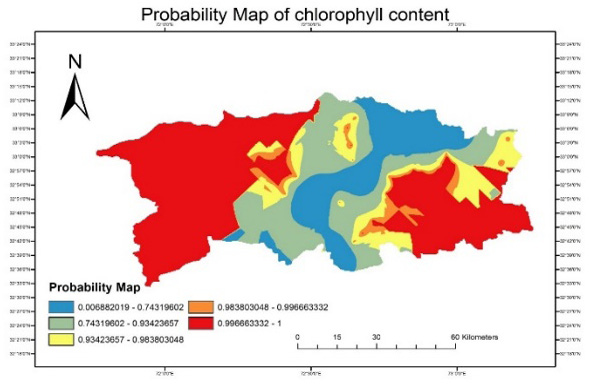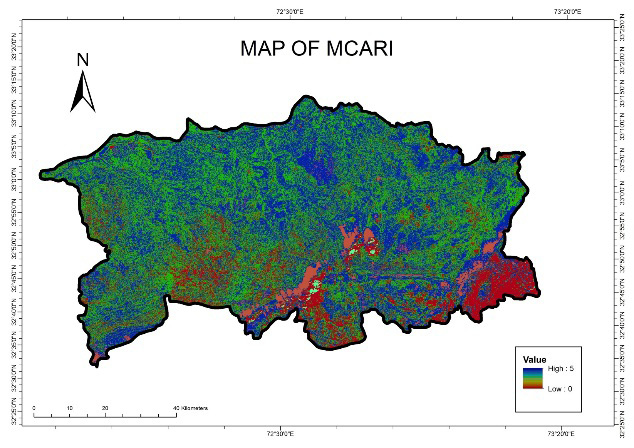Real Time Estimation of Wheat Chlorophyll Content Retrieve from Landsat 8 Imagery Under Rainfed Condition
Real Time Estimation of Wheat Chlorophyll Content Retrieve from Landsat 8 Imagery Under Rainfed Condition
Syed Shah Mohioudin Gillani1, Muhammad Naveed Tahir1, Adeel Anwar1*, Syed Ijaz Ul Haq2, Muhammad Awais3, Mujahid Iqbal4, Javed Iqbal5, Hina Ahmed Malik3, Syed Muhammad Zaigham Abbas Naqvi6, Raza Ullah7 and Muhammad Abdullah Khan1
Land Cover classification of Chakwal district 2017-18.
GNDVI map of 2017-18.
GNDVI graph and ground chlorophyll content.
NDVI map of 2017-18.
NDVI graph and ground chlorophyll content.
CARI map of 2017-18.
CARI graph and ground chlorophyll content.
TCARI map of 2017-18.
TCARI graph and ground chlorophyll content.
MCARI graph and ground chlorophyll content.
Probability map of for the prediction wheat chlorophyll content.
MCARI map of 2017-18.






















